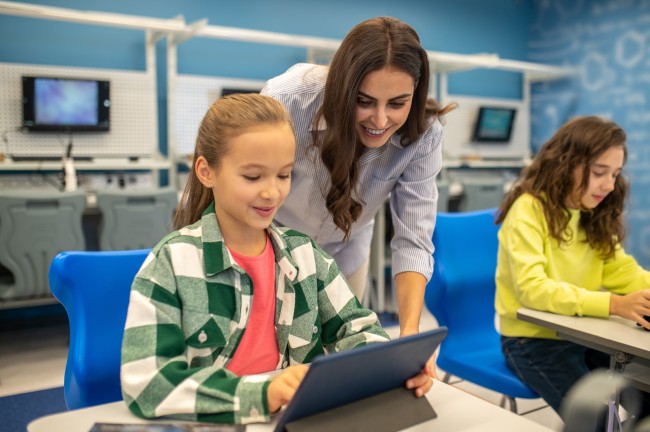
Technology has always been a fundamental resource used by teachers, students, and institutions in education. As technology has improved, so has learning.
The latest technology trends for schools range in design from how to learn specific skills better to how to better protect schools from security threats.
With AI developing to integrate more digital elements into learning, these tech trends for schools will likely continue long into the foreseeable future.
AI Use in Classrooms
Though artificial intelligence in schools is early, AI in classrooms is happening. Natural language processing and machine learning make learning easier and more engaging.
They’re receiving personalized lessons, assisted by human teachers, to ensure individual student needs are met. An example of this is using AI chatbots or AI avatars to practice language skills for students.
Advanced STEM Labs
Anyone can go online and learn various coding and tech-related skills. More progressive schools are developing tech-friendly STEM labs wherein students can come and collaborate on projects, gain access to technology tools they may not have at home advanced PCs, pursue tech-based projects such as robotics, and create content with video and audio tools.
Weapon Detection Technology
Detect concealed weapons with ease. Through non-invasive weapon detection, thousands of students can be scanned per hour. AI is used to detect concealed knives, guns, and similar items. Personnel or staff can quietly handle the threat from there without making a scene.
While on-site security personnel and metal detectors have statistically shown to have a limited effect on overall school security, school security solutions and technologies have the potential to help prevent mass shootings in schools.
Automated Assessments
To evaluate student progress, more automated assessments are being used. Many remote testing and learning generate data, which can then be analyzed to instantly identify weak areas needing improvement. The digitization of assessments has also meant grades can be given much faster and more accurately.
Rise of Digital Content
There is no question that the average student’s mind is inclined to learn effectively through digital devices. Content that would normally be taught in classrooms is being made available online, including lectures, textbooks, exercises, tests, and assessments.
The amount of digital educational content continues to increase, and cloud-based computing allows students to interact with teachers, submit assignments, and collaborate on projects with other students remotely.
The COVID-19 pandemic forced schools to quickly develop mobile and remote learning methods. Educational content also sped up with how it was being moved online and digitized. We expect remote learning to continue post-pandemic, especially as more content goes digital.
AR and VR in Schools
AR and VR in education create more immersion in lesson plans and encourage experiential learning.
Students can explore virtual worlds, practice tasks, and engage in unique simulations based on where they’re at in their learning, understanding how a specific student learns and tailoring the experience to the student.
This is particularly effective at a post-secondary level in classrooms with students entering medicine, engineering, and veterinary medicine, where high-stress situations are prominent.
Digital Games in Classrooms
More digital games are making their way into schools. Game design is fun, engaging, and typical for many students. It allows them to compete with peers, work together, and learn new concepts.
The more interactive learning is, studies have shown, the more likely a student will retain the information and be able to use it to build their skills.
More Advanced Access Control
Student safety is prioritized in extreme safety threats and active shooters. As buildings, schools are more carefully guarding access control than ever. They are using fobs or access control cards that have to be swiped.
In some cases, this is paired with automated locking doors that minimize travel in and out of the school for individuals without access control cards or fob during unauthorized hours.
More Video Monitoring snd AI Use
Furthermore, to improve safety, more security cameras are being used and often calibrated with AI to discover threats before most human beings can.
The use of video is relatively inexpensive as so much has gone digital in the last few decades. The feed can also be patched into police when needed rather easily, further adding to its potential as a response tool in the face of a threat.
Integrated School Security Software
Software hubs and cloud-based computing manage these school security features and protocols.
Security personnel can monitor a lot more than they ever have been in the past, using AI, facial recognition, weapon detection technologies, and more to quietly identify threats before they have the chance to develop into something more.
